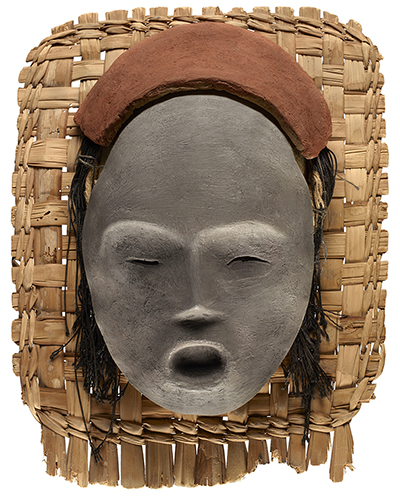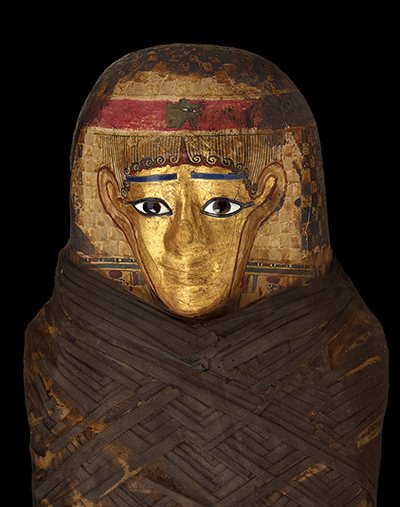LOS ANGELES, CALIF. — New scientific findings once bound in ancient and mummified Egyptian and Peruvian remains will be revealed when the Natural History Museum of Los Angeles County (NHM) presents the world premiere of “Mummies: New Secrets from the Tombs,” the first touring exhibition of North America’s largest collection of mummies. Organized by the Field Museum in Chicago, the exhibition, on view September 18–January 18, provides a rare and immersive look at its preeminent collection of mummies — which has never traveled outside of the museum — going beyond mummification in royal Egypt to explore the surprising similarities and vast differences between these societies, their environments and the preparations they made for the dead in the afterlife.

Replica of a Chinchorro mummy mask. The Chinchorro people, who lived in what is now Peru and Chile, were the world’s first practitioners of mummification, thousands of years before the Egyptians. A mask like this would have been the finishing touch on a Chinchorro mummy. —©2015 The Field Museum, John Weinstein photo
The exhibition features more than 20 mummies and coffins, including one of the oldest mummies in the world, from pre-Dynastic Egypt to pre-Incan Peru, alongside archaeological treasures, such as stone sarcophagi fragments, mummified heads and trophy skulls, animal mummies and pots to bring food and beer into the afterlife. Using modern and noninvasive research techniques, scientists and curators were able to avoid the hazards of unwrapping the fragile specimens to virtually uncover a wealth of new discoveries about the mummy individuals — each sacred storehouses of natural and cultural information.
The exhibition presents these findings through the use of CT scans, 3D-printed casts of bones and burial figurines, forensically reconstructed sculptural busts by artist Elisabeth Daynès and interactive touch tables for digitally unwrapping mummies to explore their interior. To celebrate the Los Angeles premiere, NHM will extend its opening day hours through midnight on Friday, September 18.
Divided into two main sections, Peru and Egypt, each has its own introduction to discuss who is inside the wrappings of the mummies, how climate helps preserve human remains and modern methods of examination. Burial tombs will be reconstructed within each area to gain a deeper understanding of the ingeniousness of burial techniques and how living communities outside related to the mummies. Peruvian and Egyptian sections are linked together by a component that compares and contrasts each of the societies and their different responses to death, burial and the afterlife.

Known as the “Gilded Lady,” this mummy’s headdress is made of cartonage (glued layers of papyrus or linen) and covered with gilding. Ancient Egyptians believed that masks allowed the dead to maintain their senses in the afterlife; the golden skin was used to show divinity. —©2015 The Field Museum, John Weinstein photo
Recently conserved mummies from pre-Dynastic through Roman-era Egypt are some of the most extraordinary in the exhibition. The 14-year-old boy “Minirdis” was mummified with beautiful cartonnage coverings and a gilded mask, but was interred in a used coffin from an earlier dynasty that, poignantly, was too big for him. Seeing the opened coffin of Minirdis in two pieces will allow visitors to understand how the coffin was constructed. The mummy of a 40-year-old female of the Roman era, known as “Gilded Lady,” had remained safely stored in the museum’s vaults since 1893, along with several other mummies from the World’s Columbian Exposition. CT scans have revealed her age, a slight overbite, and Cleopatra-like curly hair. Visitors will also meet a sister and brother of the Ptolemaic era (305–30 BCE) — both about 11 years old when they died, their family arranged for superbly gilded and decorated masks for them.
Natural History Museum of Los Angeles County is at 900 Exposition Boulevard. For information, www.nhm.org or 213-763-3218.

